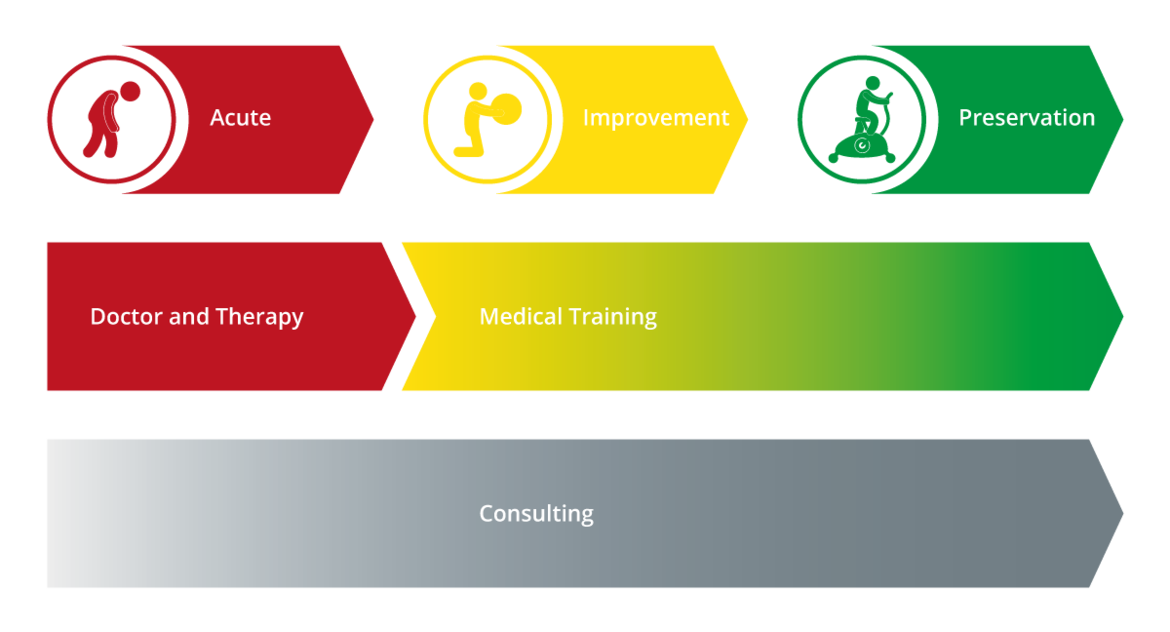Many experiential reports from therapeutic institutions describe the following frequent underlying problem: patients leave the acute phase after the first or second referral and fail to take up any further measures. The background to this is well known to therapeutic institutions. Budget pressure means doctors are very thrifty with their prescriptions.
The effects can be e.g. incomplete recovery or insufficient restoration of mobility. This leads to delays in recovery. And certain limitations could remain, leading to long-term restriction of mobility.
The greatest challenge for your institution is the wasted opportunity to accompany the patient out of the acute phase into the development phase, making them conscious step by step of their body’s need for mobility.
For proxomed’s mobility therapy, patient management using the 3-phases system plays an essential role. At the forefront of this is early explanation of the long-term therapy plan to your patients, increasing their motivation for continuing training therapy. This systematically turns patients into self-payers.
We support you not only with a coherent system that has achieved success in many institutions, but also with marketing documents that can be individually tailored to your practice.
For the 3-phases system, we will be happy to put together brochures and materials for your patients allowing you to offer them explanation, information and motivation. In addition, we can offer training and seminars for you and your employees. Here, you can learn how to incorporate the 3-phases system and anchor it in successful patient management. The training is practice-oriented and tailored to you.
We will be happy also to realise individual media for you regarding the proxomed 3-phases system. Of course, it will reflect your corporate design and specific wishes.
BENEFIT FROM THESE ADVANTAGES OF THE 3-PHASES SYSTEM:
- Patient traffic is planned and controlled already from the medical practice onwards through the stabilisation and retention phases
- Patients become long-term, self-paying customers
- Average increase in the value of a prescription and sale of more valuable remedies
- Better screening of patient referrals, fixed supervision expenditures and secure application in patient education
- High patient satisfaction and effective sale of self-payer services
- Strong value creation for practice and patient





![[Translate to Englisch:] Akutphase Symbol](/fileadmin/Know-how/3-Phasen/Akutphase-Symbol.png)
![[Translate to Englisch:] Aufbauphase Symbol](/fileadmin/Know-how/3-Phasen/Aufbauphase-Symbol.png)
![[Translate to Englisch:] Erhaltungsphase Symbol](/fileadmin/Know-how/3-Phasen/Erhaltungsphase-Symbol.png)